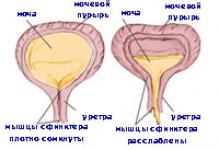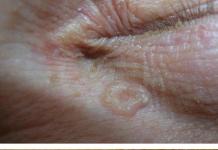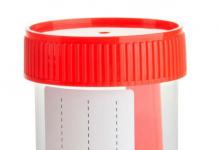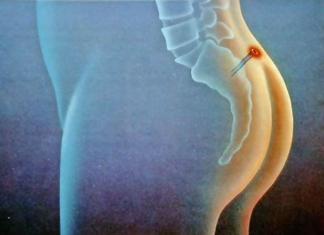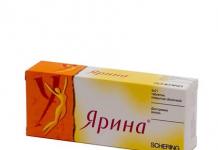Tablets 0.625 mg. + 2 mg:
- Active substance of the semi-finished granule product: Perindopril erbumine - 2 mg;
- Excipients of semi-finished granules: calcium chloride hexahydrate - 0.6 mg; lactose monohydrate - 30.915 mg; crospovidone - 4 mg;
- Excipients: microcrystalline cellulose - 11.25 mg; sodium bicarbonate - 0.25 mg; colloidal silicon dioxide - 0.135 mg; magnesium stearate - 0.225 mg.
Tablets 1.25 mg. + 4 mg.:
- Active substance of the semi-finished granule product: Perindopril erbumine - 4 mg;
- Excipients of semi-finished granules: calcium chloride hexahydrate - 1.2 mg; lactose monohydrate - 61.83 mg; crospovidone - 8 mg;
- Excipients: microcrystalline cellulose - 22.5 mg; sodium bicarbonate - 0.5 mg; colloidal silicon dioxide - 0.27 mg; magnesium stearate - 0.45 mg.
Tablets 2.5 mg. + 8 mg:
- Active substance of the semi-finished granule product: Perindopril erbumine - 8 mg;
- Excipients of semi-finished granules: calcium chloride hexahydrate - 2.4 mg; lactose monohydrate - 123.66 mg; crospovidone - 16 mg;
- Excipients: microcrystalline cellulose - 45 mg; sodium bicarbonate - 1 mg; colloidal silicon dioxide - 0.54 mg; magnesium stearate - 0.9 mg.
Tablets, 0.625 mg+2 mg, 1.25 mg+4 mg, 2.5 mg+8 mg. 10 tablets each in blister packs made of combined material OPA/Al/PVC and aluminum foil. 3 contour strip packs (10 tablets each) are placed in a cardboard pack.
Description of the dosage form
Tablets 0.625 mg + 2 mg: round, biconvex, white or almost white, beveled, with a short line engraved on one side.
Tablets 1.25 mg + 4 mg: round, biconvex, white or almost white, scored on one side and chamfered.
Tablets 2.5 mg + 8 mg: round, biconvex, white or almost white, scored on one side.
pharmachologic effect
Vasodilator, diuretic, hypotensive.
Pharmacokinetics
The combined use of perindopril and indapamide does not change their pharmacokinetic parameters compared to the separate administration of these drugs.
Perindopril after oral administration is rapidly absorbed from the gastrointestinal tract. Bioavailability is 65–70%. Eating reduces the conversion of perindopril to perindoprilat. T1/2 of perindopril from blood plasma is 1 hour.
Cmax in blood plasma is achieved 3–4 hours after oral administration. Since taking with food reduces the conversion of perindopril to perindoprilat and the bioavailability of the drug, perindopril should be taken once a day in the morning, before breakfast. Taking perindopril once a day, equilibrium concentration is achieved within 4 days.
It is metabolized in the liver to form an active metabolite - perindoprilate. In addition to the active metabolite perindoprilate, perindopril forms 5 more inactive metabolites. The binding of perindoprilate to plasma proteins is dose-dependent and amounts to 20%. Perindoprilat easily passes through histohematic barriers, excluding the blood-brain barrier; a small amount penetrates the placenta and into breast milk. Excreted by the kidneys, T1/2 of perindoprilate is about 17 hours. It does not accumulate.
In elderly patients and in patients with renal and heart failure, the elimination of perindoprilate is slowed down.
The kinetics of perindopril is altered in patients with liver cirrhosis: hepatic clearance is reduced by half. However, the amount of perindoprilate formed does not decrease, which does not require dose adjustment.
Indapamide. Quickly and almost completely absorbed into the gastrointestinal tract. Eating slightly slows down absorption, but does not significantly affect the amount of indapamide absorbed. Cmax in blood plasma is achieved 1 hour after oral administration of a single dose. Binds to plasma proteins by 79%. T1/2 ranges from 14 to 24 hours (average 18 hours). Does not cumulate.
Metabolized in the liver. It is excreted by the kidneys (70%) mainly in the form of metabolites (the fraction of the unchanged drug is about 5%) and by the intestines with bile in the form of inactive metabolites (22%). In patients with renal failure, the pharmacokinetic parameters of indapamide do not change significantly.
Pharmacodynamics
Co-Perineva is a combination drug containing an ACE inhibitor - perindopril and a thiazide-like diuretic - indapamide. The drug has antihypertensive, diuretic and vasodilating effects.
Co-Perineva has a pronounced dose-dependent antihypertensive effect, independent of the patient’s age and body position and not accompanied by reflex tachycardia. Does not affect lipid metabolism (total cholesterol, LDL, VLDL, HDL, triglycerides (TG) and carbohydrates), incl. in patients with diabetes mellitus. Reduces the risk of hypokalemia caused by diuretic monotherapy.
The antihypertensive effect lasts for 24 hours.
A stable reduction in blood pressure is achieved within 1 month with the use of the drug Co-Perineva without an increase in heart rate. Stopping treatment does not lead to the development of withdrawal syndrome.
Perindopril is an ACE inhibitor, the mechanism of action of which is associated with inhibition of ACE activity, leading to a decrease in the formation of angiotensin II, eliminates the vasoconstrictor effect of angiotensin II, reduces the secretion of aldosterone. The use of perindopril does not lead to sodium and fluid retention and does not cause reflex tachycardia during long-term treatment. The antihypertensive effect of perindopril develops in patients with low or normal plasma renin activity.
Perindopril acts through its main active metabolite, perindoprilate. Its other metabolites are inactive. The effect of the drug Co-Perineva leads to:
- dilatation of veins (reduction of preload on the heart), caused by changes in PG metabolism;
- reduction of peripheral vascular resistance (reduction of afterload on the heart).
In patients with heart failure, perindopril helps:
- decreased filling pressure of the left and right ventricles;
- increased cardiac output and cardiac index;
- increasing regional blood flow in muscles.
Perindopril is effective for arterial hypertension of any severity: mild, moderate and severe. The maximum antihypertensive effect develops 4–6 hours after a single oral dose and persists throughout the day. Discontinuation of therapy does not lead to the development of withdrawal syndrome.
It has vasodilating properties and restores the elasticity of large arteries. The addition of a thiazide-like diuretic enhances (addition) the antihypertensive effect of perindopril.
Indapamide is a sulfonamide derivative and is a diuretic. Inhibits the reabsorption of sodium in the cortical segment of the renal tubules, increasing the excretion of sodium and chlorine by the kidneys, thus leading to increased diuresis. To a lesser extent increases the excretion of potassium and magnesium. Possessing the ability to selectively block “slow” calcium channels, indapamide increases the elasticity of arterial walls and reduces peripheral vascular resistance. It has a hypotensive effect in doses that do not have a pronounced diuretic effect. Increasing the dose of indapamide does not increase the antihypertensive effect, but increases the risk of adverse events.
Indapamide in patients with arterial hypertension has no effect on lipid metabolism: TG, LDL and HDL and carbohydrate metabolism, even in patients with diabetes mellitus and arterial hypertension.
Indications for use of Ko-perinev
Essential hypertension.
Contraindications to the use of Ko-perinev
- increased sensitivity to active substance, any ACE inhibitor, sulfonamide derivatives or any excipients of the drug;
- angioedema (hereditary, idiopathic or angioedema) while taking other ACE inhibitors (history);
- severe renal failure;
- bilateral renal artery stenosis, stenosis of the artery of a single kidney;
- refractory hyperkalemia;
- lactose intolerance, lactase deficiency or glucose-galactose malabsorption;
- simultaneous administration drugs that prolong the QT interval on the ECG, simultaneous use with antiarrhythmic drugs that can cause ventricular tachycardia of the “pirouette” type;
- severe liver failure (including with encephalopathy);
- pregnancy, period breastfeeding, age under 18 years (efficacy and safety have not been established);
- Given the lack of sufficient experience with use, Co-Perineva should not be taken by patients on dialysis and patients with untreated decompensated heart failure.
With caution: systemic connective tissue diseases (including systemic lupus erythematosus (SLE), scleroderma), therapy with immunosuppressants (risk of developing neutropenia, agranulocytosis), inhibition of bone marrow hematopoiesis, decreased blood volume (taking diuretics, salt-free diet, vomiting, diarrhea) , angina pectoris, cerebrovascular diseases, renovascular hypertension, diabetes mellitus, chronic heart failure (functional class IV according to the NYHA classification), hyperuricemia (especially accompanied by gout and urate nephrolithiasis), blood pressure lability, elderly patients, hemodialysis using high-flow polyacrylonitrile membranes; before the LDL apheresis procedure, simultaneous desensitizing therapy with allergens (for example, hymenoptera venom); condition after kidney transplantation, aortic stenosis and/or mitral valve, hypertrophic obstructive cardiomyopathy.
Ko-perineva Use during pregnancy and children
Pregnancy. Taking Co-Perineva is contraindicated during pregnancy. If you are planning pregnancy or if it occurs while taking Co-Perineva, you should immediately stop taking the drug and prescribe another antihypertensive therapy. The drug Co-Perineva should not be used in the first trimester of pregnancy. Controlled clinical trials There have been no studies on the use of ACE inhibitors in pregnant women. Limited data indicate that taking ACE inhibitors in the first trimester did not lead to fetotoxicity-related fetal malformations, but the fetotoxic effect of ACE inhibitors cannot be completely excluded. The drug Co-Perineva is contraindicated in the second and third trimesters of pregnancy. Long-term use of ACE inhibitors in the second and third trimesters of pregnancy can lead to impaired fetal development (decreased renal function, oligohydramnios, delayed ossification of the skull bones) and the development of complications in the newborn (renal failure, arterial hypotension, hyperkalemia).
Long-term use of thiazide diuretics in the third trimester of pregnancy can cause hypovolemia in the mother and a decrease in uteroplacental blood flow, which leads to fetoplacental ischemia and fetal growth retardation. In rare cases, while taking diuretics, hypoglycemia and thrombocytopenia may develop in the fetus/newborn. If a woman took an ACE inhibitor in the second and third trimesters of pregnancy, it is recommended to conduct an ultrasound of the kidneys and skull of the fetus/newborn.
In newborns whose mothers received therapy with ACE inhibitors, hypotension may occur, so newborns should be under close medical supervision.
Breastfeeding period. The drug Co-Perineva is contraindicated during breastfeeding.
It is not known whether perindopril is excreted in breast milk.
Indapamide is excreted in breast milk. Causes a decrease or suppression of lactation. The newborn may develop hypersensitivity to sulfonamide derivatives, hypokalemia and nuclear jaundice.
It is necessary to assess the significance of therapy for the mother and make a decision to stop breastfeeding or stop taking the drug.
Co-perineva Side effects
Perindopril has an inhibitory effect on the RAAS and reduces the excretion of potassium ions by the kidneys while taking indapamide. The risk of developing hypokalemia (serum potassium content less than 3.4 mmol/l) in patients using the drug Co-Perineva at a daily dose of 0.625 mg/2 mg is 2%, 1.25 mg/4 mg - 4% and 2 .5 mg/8 mg - 6%.
WHO classification of the incidence of side effects: very often - ≥1/10; often - from ≥1/100 to
From the hematopoietic organs: very rarely - thrombocytopenia, leukopenia/neutropenia, agranulocytosis, aplastic anemia, hemolytic anemia (there are reports with the use of ACE inhibitors). In certain clinical situations (conditions after kidney transplantation or in patients on hemodialysis or peritoneal dialysis), ACE inhibitors may cause anemia.
From the central and peripheral nervous system: often - paresthesia, headache, dizziness, vertigo; infrequently - mood lability, sleep disturbances; very rarely - confusion.
From the senses: often - visual impairment, tinnitus.
From the outside of cardio-vascular system: often - a pronounced decrease in blood pressure, incl. orthostatic hypotension; very rarely - arrhythmias, incl. and bradycardia, ventricular tachycardia, atrial fibrillation, as well as angina pectoris, myocardial infarction, possibly secondary, due to a decrease in blood pressure in high-risk patients; frequency unknown - ventricular tachycardia of the “pirouette” type (possibly fatal).
From the respiratory system: often - a dry cough that persists for a long time during the use of ACE inhibitors and disappears after their cessation; dyspnea; infrequently - bronchospasm; very rarely - eosinophilic pneumonia, rhinitis.
From the outside digestive system: often - constipation, dryness of the oral mucosa, loss of appetite, nausea, epigastric pain, abdominal pain, impaired taste perception, vomiting, dyspepsia, diarrhea; very rarely - pancreatitis, angioedema of the intestine, jaundice; frequency not set - in case liver failure there is a possibility of developing hepatic encephalopathy.
From the skin and subcutaneous fat: often - itchy skin, skin rash, maculopapular rash; uncommon - angioedema of the face, extremities, lips, oral mucosa, tongue, vocal folds and/or larynx, urticaria; hypersensitivity reactions, mainly dermatological, in patients with a history of allergic reactions; worsening of SLE; very rarely - erythema multiforme, toxic epidermal necrolysis, Stevens-Johnson syndrome; isolated cases of photosensitivity reaction.
From the musculoskeletal system: often - muscle spasms.
From the urinary system: infrequently - renal failure; very rarely - acute renal failure.
From the reproductive system: infrequently - impotence.
Other: often - asthenia; infrequently - increased sweating.
Laboratory indicators: rarely - hypercalcemia; frequency unknown - increase in QT on the ECG; increased concentrations of uric acid and glucose in the blood serum while taking the drug; increased activity of liver enzymes; a slight increase in plasma creatinine concentration, reversible after cessation of therapy, which often develops against the background of renal artery stenosis or stenosis of the artery of a single kidney, arterial hypertension during diuretic therapy, with renal failure; hypokalemia, especially significant for patients at risk; hypochloremia can lead to compensatory metabolic alkalosis (the likelihood and severity of the effect is low); hyperkalemia is often reversible; hyponatremia with hypovolemia, leading to a decrease in blood volume and orthostatic hypotension.
According to clinical studies, side effects correspond to the previously established safety profile of the combination of perindopril and indapamide. In rare cases, the following serious adverse events have developed: hyperkalemia, acute renal failure, arterial hypotension and cough, and the possible development of angioedema.
Drug interactions
Lithium preparations. At simultaneous use cases of reversible increases in serum lithium concentrations have been reported with lithium preparations and ACE inhibitors. Concomitant use of thiazide diuretics may increase the concentration of lithium in the blood plasma and the risk of its toxic effect while taking an ACE inhibitor.
The simultaneous use of Co-Perineva with lithium preparations is not recommended. If concurrent use is necessary, serum lithium concentrations should be carefully monitored.
Baclofen - potentiation of the hypotensive effect. It is necessary to monitor blood pressure, renal function and, if necessary, adjust the dose of antihypertensive drugs.
NSAIDs, incl. high doses of acetylsalicylic acid (more than 3 g/day). The simultaneous use of ACE inhibitors with NSAIDs (including acetylsalicylic acid in doses that have an anti-inflammatory effect, COX-2 inhibitors and non-selective NSAIDs) reduces the hypotensive effect of ACE inhibitors, increases the risk of developing renal dysfunction, including the development of acute renal failure, increases serum potassium levels blood, especially in patients with pre-existing renal impairment.
This combination is recommended to be used with caution, especially in elderly patients. Before starting treatment, patients need to compensate for fluid loss, as well as regularly monitor kidney function both at the beginning of therapy and during treatment.
Tricyclic antidepressants, antipsychotics (neuroleptics). They enhance the hypotensive effect and increase the risk of developing orthostatic hypotension (additive effect).
GCS, tetracosactide. Reducing the hypotensive effect (retention of fluid and sodium ions as a result of the action of corticosteroids).
Other antihypertensive drugs: the hypotensive effect of Co-Perineva may be enhanced.
Perindopril
Potassium-sparing diuretics (spironolactone, triamterene, amiloride, eplerenone) and potassium supplements: ACE inhibitors reduce diuretic-induced renal potassium loss. When used together with ACE inhibitors, an increase in potassium levels in the blood serum may occur, even leading to death. If simultaneous use of an ACE inhibitor and the above drugs is necessary (in case of confirmed hypokalemia), caution should be exercised and regular monitoring of potassium levels in the blood plasma and ECG parameters should be carried out.
Concomitant use requiring special caution
Oral hypoglycemic agents (sulfonylureas) and insulin: the use of ACE inhibitors (described for captopril and enalapril) in very rare cases may enhance the hypoglycemic effect of sulfonylureas and insulin in patients with diabetes mellitus; with their simultaneous use, it is possible to increase glucose tolerance and reduce the need for insulin, which may require dose adjustment of oral hypoglycemic agents and insulin.
Concomitant use requiring caution
Allopurinol, cytostatic immunosuppressants, corticosteroids (for systemic use) and procainamide: simultaneous use of these drugs with ACE inhibitors may increase the risk of developing leukopenia.
General anesthetic agents: ACE inhibitors may enhance the hypotensive effect of some anesthesia agents. general anesthesia.
Diuretics (thiazide and loop): the use of diuretics in high doses can lead to hypovolemia (due to a decrease in blood volume), and the addition of perindopril to therapy can lead to a pronounced decrease in blood pressure.
Indapamide
Concomitant use requiring special caution
Drugs that can cause ventricular polymorphic tachycardia of the “pirouette” type: because. there is a risk of developing hypokalemia, indapamide should be used with caution simultaneously with drugs that can cause ventricular tachycardia of the “pirouette” type, such as: antiarrhythmic drugs (quinidine, hydroquinidine, disopyramide, amiodarone, dofetilide, ibutilide, bretylium tosylate, sotalol); some antipsychotics (chlorpromazine, cyamemazine, levomepromazine, thioridazine, trifluoperazine), benzamides (amisulpride, sulpiride, sultopride, tiapride), butyrophenones (droperidol, haloperidol), other antipsychotics (pimozide); other drugs, such as bepridil, cisapride, difemanil methyl sulfate, erythromycin for IV use, halofantrine, mizolastine, moxifloxacin, pentamidine, sparfloxacin, vincamine for IV use, methadone, astemizole, terfenadine. Concomitant use with the above drugs should be avoided. It is necessary to monitor the potassium content in the blood serum to avoid hypokalemia, the development of which requires its correction, and to monitor the QT interval on the ECG.
Medicines that can cause hypokalemia: amphotericin B with intravenous administration, gluco- and mineralocorticoids (when administered systemically), laxatives that stimulate intestinal motility (laxatives that do not stimulate intestinal motility should be used), tetracosactide - increases the risk of developing hypokalemia ( additive effect). It is necessary to monitor the potassium content in the blood plasma and, if necessary, correct it. Particular attention should be paid to patients concomitantly receiving cardiac glycosides.
Cardiac glycosides: hypokalemia enhances the toxic effect of cardiac glycosides. With the simultaneous use of indapamide and cardiac glycosides, the potassium content in the blood plasma, ECG readings should be monitored and, if necessary, the dose of cardiac glycosides should be adjusted.
Concomitant use requiring caution
Metformin: functional renal failure while taking diuretics, especially loop diuretics, when used simultaneously with metformin increases the risk of developing lactic acidosis. Metformin should not be used if the concentration of creatinine in the blood plasma exceeds 15 mg/l (135 µmol/l) in men and 12 mg/l (110 µmol/l) in women.
Preparations containing calcium salts: with simultaneous use, hypercalcemia may develop due to a decrease in calcium excretion by the kidneys.
Cyclosporine: it is possible to increase the concentration of creatinine in the blood plasma without changing the concentration of cyclosporine in the blood plasma, even in the absence of pronounced loss of sodium ions and dehydration.
Dosage of Co-perinev
Orally, 1 time per day, preferably in the morning before breakfast, with a sufficient amount of liquid.
If possible, taking the drug should begin with selecting doses of single-component drugs. If clinically necessary, it is possible to prescribe combination therapy with Co-Perineva immediately after monotherapy.
Doses are given for the indapamide/perindopril ratio.
Initial dose - 1 tablet. drug Co-Perineva (0.625 mg/2 mg) 1 time per day. If after 1 month of taking the drug it is not possible to achieve adequate blood pressure control, the dose of the drug should be increased to 1 table. drug Co-Perineva (1.25 mg/4 mg) 1 time per day.
If necessary, to achieve a more pronounced hypotensive effect, it is possible to increase the dose of the drug to the maximum daily dose of Co-Perineva - 1 table. (2.5 mg/8 mg) 1 time per day.
Elderly patients. Initial dose - 1 tablet. Co-Perineva drug 0.625 mg/2 mg 1 time per day. Treatment with the drug should be prescribed after monitoring renal function and blood pressure.
Patients with impaired renal function. The drug Co-Perineva is contraindicated in patients with severe renal failure (Cl creatinine less than 30 ml/min).
In patients with moderate renal failure (creatinine clearance 30–60 ml/min), it is recommended to begin therapy with required doses drugs (in monotherapy) included in the drug Co-Perineva; maximum daily dose drug Co-Perineva - 1.25 mg/4 mg.
Patients with creatinine Cl equal to or greater than 60 ml/min do not require dose adjustment. During therapy, it is necessary to regularly monitor the concentration of creatinine and potassium levels in the blood serum.
Patients with impaired liver function. The drug is contraindicated in patients with severe liver failure. For moderately severe liver failure, no dose adjustment is required.
Children and teenagers. The drug Co-Perineva should not be used by children and adolescents under 18 years of age, because Data on efficacy and safety are insufficient.
Overdose
Symptoms: marked decrease in blood pressure, nausea, vomiting, muscle cramps, dizziness, drowsiness, confusion, oliguria up to anuria (due to a decrease in blood volume); disturbances in water and electrolyte balance are possible (low sodium and potassium levels in the blood plasma).
Treatment: gastric lavage and/or administration of activated carbon, restoration of water and electrolyte balance in a hospital setting. If there is a pronounced decrease in blood pressure, it is necessary to transfer the patient to a supine position with his legs raised up; then measures should be taken aimed at increasing the volume of blood volume (administration of 0.9% sodium chloride solution intravenously). Perindoprilat, the active metabolite of perindopril, can be removed from the body by dialysis.
Hypertension and the complications that this cardiovascular disease entails can be called a negative (from a medical point of view) sign of the times. And all because this disease occurs in at least every fifth adult. If we add here the unexamined, those who have been sick for years but avoid doctors, the statistics will be even more depressing.
But AG ( arterial hypertension) is not a sentence, not a reason to fall into despair. Advances in modern pharmacology make it possible to control the disease while maintaining an optimal quality of life. Of course, this is possible if you consult a doctor on time, and not at the stage when the target organs are already significantly affected - the heart, kidneys, brain, blood vessels, eyes. Among the medications that can correct the condition of hypertensive patients, ACE inhibitors stand out. Among them are medications latest generation, developed by specialists so that they are well tolerated by patients and side effects are rare.
ACE inhibitors: how they work
The general scheme is as follows: angiotensin I is formed from plasma beta-globulins, including angiotensinogen, under the influence of renin. It does not affect vascular tone and remains neutral. This component is susceptible to the action of ACE (that is, angiotensin converting enzyme). In this way, the vasoactive peptide angiotensin II is formed: it has an inherent effect on vascular tone precisely due to irritation of receptors that are sensitive to angiotensin. This is how the blood vessels narrow.
Under the influence of such active angiotensin, norepinephrine and aldosterone are released, as well as antidiuretic hormone. And if the entire process described above occurs with high intensity, a person develops hypertension. And the pressure can increase to a critical level, provoking hypertensive crisis and vascular accidents.
Therefore, doctors have developed medicinal products that control the production of angiotensin II and subsequent hormonal surges. In particular, it was possible to achieve this goal with Perinev’s blood pressure tablets.
Perineva: farm dossier
This medicinal product is classified as an ACE inhibitor and is available only in tablet form. The pills are white (or with slightly dark impurities). Those in doses of 2 and 8 mg are round, but those in doses of 4 mg are oval. There are 10 pieces in a cell package, and from 3 to 9 such packages in a box.
In the drug formula:
- Perindopril erbumine, semi-finished granules;
- Additional components are chloride and calcium hexahydrate, crospovidone and lactose monohydrate (this is an addition to the granules), but the pills include silicon dioxide, magnesium stearate and cellulose.
Thus, the main component is . Refers to medicine to pharmaceutical products that have hypotensive, cardioprotective, and vasodilating effects.
Pharmacodynamic characteristics

Perindopril (or kinase II) is an ACE inhibitor related to exopeptidases. It is considered a prodrug; it further produces an active metabolite called perindopril at. Transforms angiotensin I into a vasoconstructor, allowing the destruction of bradykinin with the formation of an inactive hectapeptide.
Due to the fact that ACE activity decreases, plasma renin is activated, and aldosterone production decreases. And since ACE destroys bradykinin, inhibition of this enzyme leads to increased activation of the kallikrein-kinin system. The prostaglandin system is immediately activated.
Perindopril:
- Lowers blood pressure, and SBP, and DBP;
- Regardless of whether the patient is standing or lying down, blood pressure drops;
- Adjusts in the direction of reducing OPSS;
- Accelerates peripheral blood flow;
- Does not increase heart rate;
- As noted in the instructions, it also accelerates blood flow in the kidneys without affecting glomerular filtration rates.
For the peak hypotensive effect to develop, you need to wait about 4-6 hours after oral administration. This effect will be prolonged for 24 hours. But, as doctors note, even after a day the effect will remain 87-100%. We can say that blood pressure drops quickly, but at the same time smoothly - and this is the most comfortable scheme for a hypertensive patient.
As for the stabilization of the hypotensive state, it can be expected after a month of a regular schedule. And it lasts for a long time. When you stop drinking Perineva, there will be no withdrawal symptoms.
It has been proven that the active ingredient also reduces hypertrophic transformations of the left ventricular myocardium. It also increases the concentration of high-density lipoproteins. Individuals with hyperuricemia note a decrease in uric acid levels. With long-term use, the isoenzyme myosin profile is stabilized. The clinical significance of the interstitial type of fibrosis also decreases.
The drug tends to remove some transformations in small arteries and optimize the elasticity of large arteries. Pre- and afterload on the heart is reduced. In CHF, peripheral vascular resistance decreases, as does ventricular filling pressure. Cardiac output increases, as does the cardiac index.
Pharmacokinetic characteristics
The medicinal composition is absorbed quite quickly from the digestive tract; it takes an hour for peak plasma levels to be reached. Biological availability – within 65-70%.
Approximately 20% of the absorbed component becomes the active metabolite perindoprilate. Its plasma maximum concentration is fixed after 3.5 hours, and the half-life is equal to an hour. The substance has an insignificant connection with blood proteins (from the plasma part), but the connection with ACE does not reach 30%, but it depends on the content of the ingredient.
Evacuation is carried out through the kidneys. Food, as scientists have proven, somewhat reduces the transformation of perindopril into perindoprilat, which reduces drug bioavailability.
Who is it shown to?
The detailed instructions for use of the described Perineva indicate two main indications for use - this is, in fact, arterial hypertension, as well as CHF. Often this particular medication is used in combination therapy with indapamide - this is done to prevent recurrent stroke in people who currently or previously have cerebrovascular diseases in the active phase.
In addition, the ACE inhibitor in question can be prescribed when cardiac ischemia is stable in order to reduce the threat of cardiovascular disasters in people who have experienced acute MI or coronary revascularization.
Who shouldn't drink
Perineva, as well as its analogues, has absolute and relative contraindications for use. For example, a categorical ban applies to children - this medication is not prescribed to persons under the age of majority in principle.
Among the absolute contraindications:
- Galactose intolerance and lactase deficiency, as well as glucose-galactose malabsorption syndrome;
- High individual sensitivity to formula ingredients or other representatives of this pharmaceutical group;
- Idiopathic nature of angioedema earlier.
With such diagnoses or characteristics, the patient, together with the doctor, needs to look for other therapeutic regimens. If we talk about relative contraindications, then in this case the doctor will evaluate all the risks that a particular patient has. And based on his prognosis, he will decide whether he can drink Perineva or whether he should look for another remedy with less threat.
Relative restrictions in application
This primarily concerns CHF in the decompensated stage. Patients with arterial hypotension should not take the medicine; only certain calculations on the part of the doctor can allow taking Perineva.
Among the relative contraindications:
- Aortic/mitral valve stenosis;
- Renovascular type hypertension;
- Obstructive cardiomyopathy (hypertrophic type);
- Cerebrovascular diseases, which include ischemia of the heart muscle, insufficiency of cerebral blood flow, and coronary insufficiency;
- CRF (creatinine clearance is taken into account);
- Bilateral stenosis of the nephroarteries or arterial stenosis of the only existing kidney, as well as post-transplant status;
- Hemodialysis using special membranes;
- Hyperkalemia, hyponatremia and hypovolemia;
- Condition after surgery;
- Connective tissue diseases - for example, systemic lupus erythematosus, scleroderma;
- Diabetes mellitus of any type;
- Inhibition of hematopoiesis in the bone marrow associated with the use of immunosuppressants;
- The patient belongs to the Negroid race;
- Age over 65;
- Parallel therapy with allergens (desensitizing).
If the doctor who prescribes the medicine for you, for some reason, does not know about some of your diseases, current or previously, be sure to tell him about them. This happens if the patient comes to the appointment not with a medical card, but with an insert sheet. He may forget to mention this or that disease, the doctor will not take this into account, and the therapy may be incorrect (and therefore dangerous).
How to use for hypertension

The medicine can be used both in monotherapy and as one of the complex components - your doctor is responsible for this choice. The recommended starting dosage of Perineva is 4 mg. For those individuals who have significant activation of the RAAS (and this is typical for patients with severe hypertension, renovascular type hypertension and decompensatory CHF), the initial dosage will not exceed 2 mg. If the effectiveness of treatment turns out to be insufficient, the daily dosage may be increased over time to 8 mg.
If Perineva is taken by a patient who is also taking a diuretic, then in order to avoid the development of hypotension, the inhibitor should be started three days after stopping the diuretic. Or (the doctor is also considering this option), he will prescribe Perineva at a dose of 2 mg, the minimum possible for this medication. In such a situation, monitoring the content of potassium ions in the serum component of the blood, blood pressure and kidney functionality is indicated. Looking at the dynamics of these indicators, the doctor will adjust the dosage. Diuretic medication therapy can be resumed if requested.
Elderly hypertensive patients are also prescribed a minimum starting dosage of 2 mg.
Use for other cardiovascular diseases
In order to prevent stroke (repeated), people with cerebrovascular diseases are recommended to take the medicine 2 mg 1/24 two weeks before the appointment. The start of preventive therapy is indicated by the doctor no earlier than 2 weeks after the stroke.
For patients with CHF, the medicine is prescribed in the same starting dose – 2 mg. After two weeks, if the dynamics are positive, it is raised to 4 mg. At clinical manifestations diseases may additionally be prescribed beta-blockers, digoxin and certain diuretics.
If a specialist predicts a high probability of developing hypertension, for example, due to large doses of a diuretic, before prescribing Perineva, electrolyte disturbances and hypovolemia (as far as possible) should be corrected. Before/during therapy, it is necessary to monitor blood pressure, the level of potassium ions in the serum part of the biofluid, as well as the state of nephrofunction.
Treatment for stable cardiac ischemia

Starting dosage – 4 mg 1/24. After two weeks, under strict monitoring of renal function, this dosage can be doubled. Elderly patients with this diagnosis are tried to begin treatment with the lowest dose of 2 mg. If the dose is ineffective, after preliminary monitoring of renal function (this point is mandatory), after a week the dosage is raised to 4 mg, and after another 7 days it is increased to 8 mg.
During therapy, doctors monitor the content of creatinine, as well as potassium ions in the serum component of the blood.
About negative reactions
Side effects Perinevs are described in detail in the instructions. It should be noted that they often occur against the background of incorrect medication use, suboptimal combination therapy, as well as the patient’s poor lifestyle.
The frequency of recording negative reactions is as follows: more than or equal to 1 case in 10 receptions is interpreted as “very often”, more than or equal to 1 in 100, but less than 1 in 10 – “often”. “Infrequently” is one case or more in a thousand, but not less than 1 in 100. “Rarely” is a ratio of more than one case per 10,000 appointments, but not less than 1 in 1000. “Very/extremely rare” is more than 1 to 10,000 with the inclusion of individual messages.
Negative reactions:
- Heart and blood vessels. A significant decrease in blood pressure is often recorded. Very rarely, use results in angina pectoris, arrhythmia, stroke and acute MI cannot be ruled out. Vasculitis occurs with unknown frequency.
- Digestive system. Ingestion often results in indigestion, constipation and nausea, and possibly vomiting. Dyspepsia and abdominal pain cannot be excluded with the same frequency. Infrequently, a patient complains of unusual dry mouth. Rarely, pancreatitis will be a negative scenario. Hepatitis is very rare ( different types).
- Respiratory system. Patients often complain of cough and shortness of breath, they rarely experience bronchospasm, and very rarely the treatment results in a runny nose and eosinophilic pneumonia.
- CNS and PNS. There are often complaints of headaches, paresthesia, and dizziness. Mood changes and sleep disturbances occur infrequently. Very rarely there are pathologies of consciousness associated with spatial disorientation, memory gaps, difficulties in concentration and performing automatic simple actions.
- Sensors. Patients often complain of unusual ear noise, and complaints of visual defects often arise.
- OH YEAH. Muscle is often fixed convulsive syndrome.
- Genitourinary profile. Erectile dysfunction and renal failure rarely arise as a negative treatment scenario. ARF is extremely rare.
- Lymphatic system and hematopoiesis. Hemolytic anemia very rarely occurs in certain susceptible individuals. With long-term therapy at maximum doses, thrombocytopenia and agranulocytosis are possible, as well as neutropenia, reduced hemotocrit and hemoglobin.
- Leather. The largest organ in our body may respond to Perineva's therapy often skin rash, itching. Urticaria appears less frequently, as does angioedema of the face and arms/legs. Erythema multiforme is very rarely observed.
- Laboratory diagnostics can record hyperkalemia, an increase in markers of plasma creatinine and serum urea. Especially in people with severe CHF. Hypoglycemia rarely occurs increased bilirubin in the blood serum, as well as activation of liver fermentation.
Among other reactions, asthenic syndrome is often noted, and hyperhidrosis is rarely observed.
In case of overdose

The main signs of overdose are a significant decrease in blood pressure, palpitations and bradycardia, tachycardia, as well as disturbances in water and electrolyte balance. Hyperventilation, anxiety, coughing and quite a bit of dizziness are possible. A shock reaction and renal failure cannot be ruled out.
If the pressure has decreased significantly, it is recommended to lay the victim down and elevate him lower limbs. The patient's blood volume is replenished, angiotensin II is administered intravenously, as well as (possibly optional) a catecholamine solution. With developed bradycardia that cannot be controlled drug treatment, strengthen the pacemaker. Therapy for overdose is usually carried out with monitoring of vital signs, the level of creatinine and electrolytes in the serum part of the biofluid.
Removal of the substance from the systemic circulation is permissible by hemodialysis, but, it is important, the use of high-flow polyacrylonitrile membranes should be avoided during this procedure.
Notes
Combination therapy of Perineva with lithium, potassium, potassium-sparing diuretics, as well as potassium-containing products and/or dietary supplements is not considered optimal.
Like other ACE inhibitors, Perineva can provoke a sharp drop in blood pressure. But in people with uncomplicated hypertension, such a “first dose” effect is rarely recorded. But a pathological decrease in blood pressure can manifest itself in patients with reduced blood volume due to a serious salt-free diet, diuretic therapy, and hemodialysis.
Also, it is worth noting that often a significant drop in blood pressure in people with CHF (severe) is recorded with parallel use of loop diuretics, and also with AN. These patients must be seriously monitored throughout the entire period of treatment; the correct, accurate dosage of the drug is very important for them. This remark is also true for patients with cardiac ischemia and cerebrovascular diseases. In them, an excessive decrease in pressure is dangerous for acute MI and complications of the cerebrovascular type.
It is important:
- Transient (i.e., passing) arterial hypertension cannot be considered an indication for interruption of therapy; after restoration of blood volume and stabilization of blood pressure, treatment continues.
- If hypotension is characterized by clinical symptoms, dosage pharmacological agent is adjusted (sometimes it is canceled altogether).
- In situations with the development of an episode of unstable angina (even if it is minor), the benefit/risk proportion is assessed in patients with cardiac ischemia in the first weeks.
- If a person undergoing treatment has angioedema, Perineva is canceled immediately - with swelling of the face or lips, only standard antihistamines are needed, but with swelling of the tongue and larynx, as well as the glottis, the situation may get out of control. Help must be urgent.
- If during treatment the patient develops jaundice, the medication is discontinued and an examination is carried out, since Perineva can lead to a serious chain of pathologies starting with cholestatic jaundice.
- In some situations, in patients with hypertension and previously undefined PN (in particular, when taking diuretics), there may be a temporary and insignificant increase in creatinine and urea in the serum part of the biological fluid.
In persons diagnosed with diabetes mellitus, who receive insulin or take hypoglycemic agents, the glucose level is clearly monitored at the start of Perineva’s therapy.
Those patients who are awaiting surgical intervention in the near future, as a rule, stop the medication one day before. This is because anesthesia during surgery lowers blood pressure. If it is impossible to cancel the ACE inhibitor, hypotension is corrected by increasing the volume of blood volume.
If, during therapy, a patient develops a non-productive, incessant cough, this is usually a reaction to the medication. It stops after its cancellation.
Gestation and lactation
Perineva is not prescribed during pregnancy. If during treatment the patient becomes pregnant, the medicine is immediately discontinued. If a pregnant woman uses it later gestation, treatment may result in fetotoxic effects. Among them are oligohydramnios and decreased nephrofunctionality, as well as delayed ossification of the baby’s skull bones. The drug can also provoke neonatal toxic effects - hypotension, renal failure.
If for one reason or another the medication was used in the second and third trimesters, it is important to do an ultrasound of the fetus to monitor the condition of the cranial bones and kidneys.
There is no data on whether perindopril passes into breast milk, so the medication should be discontinued during lactation. Or, on the contrary, the course of treatment requires the cessation of lactation, its temporary suspension. These questions should be discussed with your doctor and gynecologist.
Can it be combined with NSAIDs?
NSAIDs are a category of drugs with a particular frequency of use. These include anti-inflammatory and pain-relieving medications, which people with different indicators of physical health use relatively often. For example, people drink Nimesulide or Diclofenac for joint pain, osteochondrosis, post-traumatic pain, etc. These compounds are also used for so-called colds.
But not all patients think about whether it is possible to combine NSAIDs with other medications that are often used in courses. So, if you combine them with Perineva’s treatment, a weakening of the hypotensive effect cannot be ruled out. The level of K ions in the blood may increase, causing renal function to deteriorate. In some cases, things turn into the development of acute renal failure. If a patient has diseased kidneys, and he drinks Aspirin along with Perineva, acute renal failure is highly likely to develop.
Therefore, before taking a painkiller or anti-inflammatory pill, remember that you are taking Perineva, which does not combine well with them. And what you can take in case of a cold or joint pain, check with your doctor.
What can be combined with if necessary
If there is such a request, then Perineva can be prescribed in combination with pharmaceuticals such as nitrates, beta-blockers, thrombolytics, as well as acetylsalicylic acid in doses with antiplatelet effect.
In pharmacies, the drug product is sold by prescription. The price of Perinev tablets is from 210 rubles for 30 pills/4 mg to 1000 rubles for 90 pills of 8 mg.
Driving
The medicine is associated with certain risks from the nervous system, therefore all persons taking Perineva are not recommended to drive or work with complex mechanisms. Headaches, dizziness, confusion, and lack of concentration cannot be ruled out. All this can cause an emergency.
If any negative reactions occur, rush to consult your doctor.
pills
Owner/Registrar
KRKA-RUS, LLC
International Classification of Diseases (ICD-10)
G45 Transient transient cerebral ischemic attacks [attacks] and related syndromes I10 Essential [primary] hypertension I20 Angina pectoris [angina pectoris] I50.0 Congestive heart failure I63 Cerebral infarction I69 Consequences of cerebrovascular diseasesPharmacological group
Arterial hypertension;
Chronic heart failure;
Prevention of recurrent stroke (as part of complex therapy with indapamide) in patients with a history of cerebrovascular diseases (stroke or transient cerebral ischemic attack);
Stable coronary artery disease: reducing the risk of developing cardiovascular complications in patients who have previously suffered a myocardial infarction and/or coronary revascularization.
History of angioedema (hereditary, idiopathic or angioedema due to taking ACE inhibitors);
Age up to 18 years (efficacy and safety have not been established);
Hereditary galactose intolerance, lapp lactase deficiency or glucose-galactose malabsorption syndrome;
Hypersensitivity to perindopril or other components of the drug;
Hypersensitivity to other ACE inhibitors.
WITH caution should be used for renovascular hypertension, in patients with bilateral renal artery stenosis, stenosis of the artery of a single kidney - the risk of developing severe arterial hypotension and renal failure; with chronic heart failure in the stage of decompensation, arterial hypotension, with chronic renal failure (creatinine clearance less than 60 ml/min), with significant hypovolemia and hyponatremia (salt-free diet and/or previous diuretic therapy, dialysis, vomiting, diarrhea), cerebrovascular diseases (in including cerebrovascular insufficiency, coronary artery disease, coronary insufficiency) - the risk of developing an excessive decrease in blood pressure; with stenosis of the aortic or mitral valve, hypertrophic obstructive cardiomyopathy, hemodialysis using high-flow polyacrylonitrile membranes - the risk of developing anaphylactoid reactions; in patients after kidney transplantation - no experience clinical application; before the LDL apheresis procedure, simultaneously with desensitizing therapy with allergens (for example, hymenoptera venom) - the risk of developing anaphylactoid reactions; in case of connective tissue diseases (including SLE, scleroderma), inhibition of bone marrow hematopoiesis while taking immunosuppressants, allopurinol or procainamide - the risk of developing agranulocytosis and neutropenia; with congenital deficiency of glucose-6-phosphate dehydrogenase - isolated cases of the development of hemolytic anemia; in representatives of the Negroid race - the risk of developing anaphylactoid reactions; during surgery (the need for general anesthesia) - the risk of developing an excessive decrease in blood pressure; at diabetes mellitus(monitoring of blood glucose concentration is necessary); with hyperkalemia; in elderly patients.
Frequency determination adverse reactions: very often (>1/10), often (>1/100,<1/10), иногда (>1/1000, <1/100), редко (>1/10 000, <1/1000), очень редко (<1/10 000, включая отдельные сообщения).
From the central nervous system and peripheral nervous system: often - headache, dizziness, paresthesia; sometimes - sleep or mood disorders; very rarely - confusion.
From the senses: often - visual impairment, tinnitus.
From the cardiovascular system: often - a pronounced decrease in blood pressure; very rarely - arrhythmias, angina pectoris, myocardial infarction or stroke, possibly secondary, due to severe arterial hypotension in high-risk patients; vasculitis (frequency unknown).
From the respiratory system: often - cough, shortness of breath; sometimes - bronchospasm; very rarely - eosinophilic pneumonia, rhinitis.
From the digestive system: often - nausea, vomiting, abdominal pain, dysgeusia, dyspepsia, diarrhea, constipation; sometimes - dryness of the oral mucosa; rarely - pancreatitis; very rarely - cytolytic or cholestatic hepatitis.
From the genitourinary system: sometimes - renal failure, impotence; very rarely - acute renal failure.
From the hematopoietic and lymphatic systems: very rarely - with long-term use in high doses, a decrease in the concentration of hemoglobin and hematocrit, thrombocytopenia, leukopenia/neutropenia, agranulocytosis, pancytopenia is possible; very rarely - hemolytic anemia (in patients with congenital deficiency of glucose-6-phosphate dehydrogenase).
Laboratory indicators: increased serum urea and plasma creatinine, hyperkalemia, reversible after discontinuation of the drug (especially in patients with renal failure, severe chronic heart failure and renovascular hypertension); rarely - increased activity of liver enzymes and bilirubin in the blood serum; hypoglycemia.
From the skin: often - skin rash, itching; sometimes – increased sweating, angioedema of the face, limbs, urticaria; very rarely - erythema multiforme.
Others: often - asthenia, muscle cramps.
The drug is prescribed orally 1 time/day, before meals, preferably in the morning. The dose is selected individually for each patient, depending on the severity of the disease and individual response to treatment.
Arterial hypertension
Perineva ® can be used as monotherapy or in combination with other antihypertensive drugs.
For patients with severe activation of the RAAS (for example, with renovascular hypertension, hypovolemia and/or hyponatremia, chronic heart failure in the stage of decompensation or severe arterial hypertension), the recommended initial dose is 2 mg/day in one dose. If therapy is ineffective within a month, the dose can be increased to 8 mg 1 time/day if the previous dose is well tolerated.
The addition of ACE inhibitors to patients taking diuretics may cause the development of arterial hypotension. In this regard, it is recommended to carry out therapy with caution, stop taking diuretics 2-3 days before starting treatment with Perineva ® or start treatment with Perineva ® with an initial dose of 2 mg/day in one dose. Monitoring of blood pressure, renal function and the concentration of potassium ions in the blood serum is necessary. In the future, the dose of the drug can be increased depending on the dynamics of blood pressure levels. If necessary, diuretic therapy can be resumed.
U elderly patients The recommended starting dose is 2 mg/day in one dose. In the future, the dose can be gradually increased to 4 mg and, if necessary, to a maximum of 8 mg/day, provided that the lower dose is well tolerated.
Chronic heart failure
The recommended starting dose is 2 mg/day in the morning, under medical supervision. After 2 weeks, the dose can be increased to 4 mg/day in 1 dose, under blood pressure monitoring. Treatment of chronic heart failure with clinical manifestations is usually combined with potassium-sparing diuretics, beta-blockers and/or digoxin.
In patients with chronic heart failure, with renal failure and with a tendency to electrolyte disturbances (hyponatremia), as well as in patients taking diuretics and/or vasodilators at the same time, treatment with the drug is started under strict medical supervision.
In patients at high risk of developing clinically significant arterial hypotension (for example, when taking high doses of diuretics), if possible, hypovolemia and electrolyte disturbances should be corrected before starting Perineva. It is recommended that before and during therapy, carefully monitor blood pressure levels, the state of renal function and the concentration of potassium ions in the blood serum.
Prevention of recurrent stroke in patients with a history of cerebrovascular diseases
Therapy with Perineva ® should be started with 2 mg for the first 2 weeks before taking indapamide. Treatment should begin at any time (from 2 weeks to several years) after a stroke.
Stable ischemic heart disease
Treatment elderly patients should start with a dose of 2 mg, which after a week can be increased to 4 mg/day. In the future, if necessary, after another week the dose can be increased to 8 mg/day with mandatory preliminary monitoring of renal function. In elderly patients, the dose of the drug can be increased only if the previous, lower dose is well tolerated.
U patients with kidney disease The dose of Perineva ® is determined depending on the degree of renal dysfunction. During treatment, the content of potassium ions and creatinine in the blood serum should be regularly monitored. Recommended doses are presented in the table.
*- Dialysis clearance of perindoprilate is 70 ml/min. Perineva ® must be taken after a dialysis session.
Patients with liver diseases no dose adjustment is required.
Perineva helped his parents quite well, reducing blood pressure for a long time. Perinev tablets have different dosages and, accordingly, different prices. It is important that the doctor select the dosage, which is why I will not describe how the parents took Perineva.
Perineva has a lot of contraindications, but, on the other hand, all analogues have exactly the same contraindications. Parents had no side effects when taking Perineva. I read the reviews and realized that my parents were lucky; many have problems after using this drug.
Over time, the parents switched to other drugs to lower blood pressure. In general, doctors recommend combining various medications for high blood pressure and changing them periodically.
Perinev tablets have a cardioprotective and vasodilatory effect, and also exhibit a hypotensive effect. The drug is based on the following components: perindopril, lactose, calcium salt of hydrochloric acid, povidone (enterosorbent), pyrogenic silicon dioxide, microcrystalline cellulose, magnesium stearate.
Perindoprilat, which is part of Perinev, is an active metabolite that helps normalize the conduction of impulses and has general peripheral vascular resistance, which directly affects the reduction of blood pressure. The effect of the drug does not have a negative effect on the processes occurring in the cardiac cycle.
The maximum effect occurs 4-6 hours after taking the tablet and lasts about a day.
Stabilization of blood pressure is observed after a month of treatment. Regular use of the drug helps reduce hypertrophic changes in the heart muscle. Prescribing long-term treatment courses can reduce the severity of interstitial pulmonary fibrosis, while normalizing the isoenzymes of fibrillar proteins, which are the main components of contractile muscles.
Perineva tablets 4 and 8 mg photo
Taking the drug helps increase the concentration of high-density lipoproteins. This significantly reduces the risk of developing atherosclerosis and other cardiovascular pathologies.
For the treatment of chronic heart failure, Perineva is often included in a therapeutic regimen for the purpose of:
Reduce blood pressure in the ventricles during the tension phase;
- increase the volume of blood pumped by each ventricle into the main vessel during cardiac contraction;
- increase the cardiac index (calculated as follows: the minute volume of blood circulation is divided by the body area);
- reduce total peripheral vascular pressure.
At the end of the therapeutic course, withdrawal syndrome does not occur.
Perinev tablets are prescribed in the following situations:
- Persistent increase in blood pressure (hypertension);
- As a preventive measure for the development of repeated hemorrhage in the brain, especially if a previous stroke led to serious cerebral disorders (Perineva in this case is prescribed with drugs that contain indapamide - Indapressin, Indapsan, Ionic);
- Coronary heart disease (develops against the background of insufficient oxygen supply to the heart muscle through the coronary arteries);
- If there is a high risk of cerebrovascular or myocardial complications due to acute myocardial infarction.
The drug is also prescribed after coronary artery bypass surgery or laser transmyocardial revascularization.
The tablet should be taken once a day - preferably in the morning 30 minutes before breakfast. The dosage is selected individually, taking into account the characteristics of the disease, as well as the presence of other pathologies.
Characteristic features of the use of Perinev for each disease:
For arterial hypertension, Perineva is prescribed as monotherapy (sometimes as part of complex treatment). Dosage – one tablet (four mg) per day.
If there is a violation of the renin-anginotensin-aldosterone system in combination with dehydration, heart failure or a persistent increase in blood pressure, the drug is prescribed with caution - the initial dose is 0.5 tablets (2 mg) with a gradual increase in dosage if well tolerated.
For myocardial heart failure, 0.5-1 tablets of Perineva are prescribed. Be sure to monitor blood pressure levels during therapeutic treatment. If chronic heart failure has been diagnosed, then in addition to an antihypertensive drug, it is recommended to prescribe potassium-sparing diuretics, beta-blockers, and, to achieve a cardiotonic and antiarrhythmic effect, cardiac glycosides.
To prevent the development of a recurrent stroke, 0.5 tablets of Perineva are prescribed for two weeks, then treatment is carried out with indapamide-containing drugs.
For coronary heart disease, the medication is prescribed one tablet at a time, after a few weeks the dosage is doubled.
Features of application
Dose adjustment is carried out in elderly patients (if the patient is over 60 years old, the dose is halved). A creatinine test is required.
Perineva is not always combined with diuretics. Often, doctors, in order to avoid a sharply hypotensive effect, completely cancel diuretics.
If the study reveals a slight violation of amino acid-protein metabolism, then the patient is prescribed no more than a tablet. When creatinine decreases from 15 to 60 µmol/l, the patient is prescribed no more than 0.5 tablets.
Instructions for use of Perineva indicate that parallel use of non-steroidal anti-inflammatory drugs can lead to deterioration of kidney function, which threatens disruption of water, electrolyte and nitrogen balance.
The drug Perineva has a number of contraindications, so before using the tablets, you should definitely consult with your doctor.
List of conditions and diseases for which the medication is not prescribed:
- individual intolerance to perindoprilate, as well as other components of the drug;
- glucose-galactose malabsorption;
- hypolactasia – lactose intolerance;
- history of angioedema due to treatment with angiotensin-converting enzyme inhibitors.
Perineva is not prescribed to children and adolescents under 18 years of age. The drug tends to penetrate the uteroplacental barrier, so it is not prescribed to pregnant women. If a woman is breastfeeding, it is recommended that the baby be switched to an adapted formula during treatment, and to maintain lactation, breast milk must be expressed and discarded.
The drug is prescribed with caution for aortic or mitral valve stenosis, severe hyponatremia, hemolytic anemia and diabetes mellitus.
In case of overdose, the patient may experience the following reactions:
- pronounced decrease in blood pressure;
- state of shock or collapse;
- increased potassium and decreased sodium in the blood;
- acute renal failure;
- frequent and intense breathing, leading to an imbalance of oxygen and carbon dioxide in the blood (this can lead to the development of dizziness, shortness of breath, weakness, and loss of consciousness);
- a sharp increase (up to 240 beats) or decrease (up to 30-50 beats) in heart rate;
- feeling of anxiety, coughing attack.
If the above symptoms develop during treatment with Perineva, the patient should urgently call an ambulance. Before the doctors arrive, the patient should be laid down, the window should be opened, and the top buttons on his clothes should be unbuttoned.
Reviews from doctors about Perinev are as follows: when used correctly (the accuracy of the diagnosis and the correct dosage are taken into account here), patients experience a stable decrease in blood pressure and ischemic attacks. However, doctors also note the “other side of the coin” - there is difficulty in selecting an individual dosage, so patients sometimes develop negative symptoms that are life-threatening.
Analogues of the drug Perineva according to action and indications:
- Enapril,
- Lisinopril,
- Captopril,
- Kaptopres.
Perineva Ku-Tab;
Perinpress;
Piristar;
Prestarium;
Coverex.
Despite the availability of medications in pharmacies, replacing one drug with another on your own is strictly prohibited! Important - the instructions for use of Perinev, the price and reviews do not apply to analogues and cannot be used as a guide to the use of drugs of similar composition or action. All therapeutic prescriptions must be made by a doctor. When replacing Perinev with an analogue, it is important to consult a specialist; you may need to change the course of therapy, dosages, etc.
Don't self-medicate!
Indications for use of the drug Perineva
Arterial hypertension;
Chronic heart failure;
Prevention of recurrent stroke (as part of complex therapy with indapamide) in patients with a history of cerebrovascular diseases (stroke or transient cerebral ischemic attack);
Stable coronary artery disease: reducing the risk of developing cardiovascular complications in patients who have previously suffered a myocardial infarction and/or coronary revascularization.
Release form of the drug Perineva
Tablets 2 mg; contour packaging 10 cardboard pack 3;
Tablets 2 mg; contour packaging 10 cardboard pack 6;
Tablets 2 mg; contour packaging 10 cardboard pack 9;
Tablets 2 mg; contour packaging 14 cardboard pack 1;
Tablets 2 mg; contour packaging 14 cardboard pack 2;
Tablets 2 mg; contour packaging 14 cardboard pack 4;
Tablets 2 mg; contour packaging 14 cardboard pack 7;
tablets 2 mg; contour packaging 30 cardboard pack 1;
Tablets 2 mg; packaging contour cells 30 cardboard pack 2;
Tablets 2 mg; contour packaging 30 cardboard pack 3;
Pharmacodynamics of the drug Perineva
Perindopril has a therapeutic effect due to its active metabolite - perindoprilat.
Perindopril reduces both systolic and diastolic blood pressure in the supine and standing positions. Perindopril reduces peripheral vascular resistance, which leads to a decrease in blood pressure. At the same time, peripheral blood flow accelerates. However, heart rate does not increase. Renal blood flow usually increases, while the glomerular filtration rate does not change. The maximum antihypertensive effect is achieved 4–6 hours after a single oral dose of perindopril; the hypotensive effect persists for 24 hours, and after 24 hours the drug still provides 87 to 100% of the maximum effect. The decrease in blood pressure develops quickly. Stabilization of the antihypertensive effect is observed after 1 month of therapy and persists for a long time. Termination of therapy is not accompanied by withdrawal syndrome. Perindopril reduces left ventricular myocardial hypertrophy. With long-term administration, it reduces the severity of interstitial fibrosis and normalizes the myosin isoenzyme profile. Increases the concentration of HDL, in patients with hyperuricemia it reduces the concentration of uric acid.
Perindopril improves the elasticity of large arteries and eliminates structural changes in small arteries.
Perindopril normalizes heart function, reducing pre- and afterload.
In patients with CHF during therapy with perindopril, the following was noted:
Decreased filling pressure in the left and right ventricles;
Decrease in OPSS;
Increased cardiac output and cardiac index.
Taking an initial dose of perindopril (2 mg) in patients with CHF functional class I–II according to the NYHA classification was not accompanied by a statistically significant decrease in blood pressure compared to placebo.
Pharmacokinetics of the drug Perineva
After oral administration, perindopril is rapidly absorbed from the gastrointestinal tract and reaches maximum concentrations in the blood plasma within 1 hour. Bioavailability is 65–70%, 20% of the total amount of absorbed perindopril is converted into perindoprilat (the active metabolite). T1/2 from blood plasma of perindopril is 1 hour. Cmax of perindoprilate in plasma is achieved after 3–4 hours.
Taking the drug during meals is accompanied by a decrease in the conversion of perindopril to perindoprilat, and accordingly the bioavailability of the drug decreases. The volume of distribution of unbound perindoprilate is 0.2 l/kg. Binding to plasma proteins is insignificant; binding of perindoprilate to ACE is less than 30% and depends on its concentration.
Perindoprilat is excreted by the kidneys. T1/2 of the unbound fraction is about 3–5 hours. It does not accumulate. In elderly patients, in patients with renal and chronic heart failure (CHF), the elimination of perindoprilate is slowed down. Perindoprilat is removed by hemodialysis (rate - 70 ml/min, 1.17 ml/s) and peritoneal dialysis.
In patients with liver cirrhosis, the hepatic clearance of perindopril changes, but the total amount of perindoprilate formed does not change and no dosage adjustment is required.
Use of Perineva during pregnancy
During pregnancy, the use of the drug is contraindicated. It should not be used in the first trimester of pregnancy, therefore, if pregnancy is confirmed, Perineva should be discontinued as early as possible. The drug is contraindicated in the II–III trimesters of pregnancy, since use during this period of pregnancy can cause fetotoxic effects (decreased renal function, oligohydramnios, delayed ossification of fetal skull bones) and neonatal toxic effects (renal failure, arterial hypotension, hyperkalemia). If, nevertheless, the drug was used in the II–III trimesters of pregnancy, then it is necessary to conduct an ultrasound of the kidneys and bones of the fetal skull.
The use of Perineva during breastfeeding is not recommended due to the lack of data on the possibility of its penetration into breast milk. If it is necessary to use the drug during lactation, breastfeeding should be discontinued.
Contraindications to the use of Perineva
Hypersensitivity to perindopril or other components of the drug, as well as to other ACE inhibitors;
History of angioedema (hereditary, idiopathic or angioedema due to taking ACE inhibitors);
Age up to 18 years (efficacy and safety have not been established);
Hereditary galactose intolerance, Lapp lactase deficiency or glucose-galactose malabsorption syndrome.
Carefully:
Renovascular hypertension, bilateral renal artery stenosis, stenosis of the artery of a single kidney - the risk of developing severe arterial hypotension and renal failure;
CHF in the stage of decompensation, arterial hypotension;
Chronic renal failure (Cl creatinine -
Arterial hypertension is a serious disease that can cause life-threatening complications.
It is possible to normalize high blood pressure with the help of antihypertensive drugs, in particular ACE inhibitors.
One of these drugs is Perineva, created on the basis of perindopril.
You can buy pills in pharmacies only with a prescription, so you won’t be able to do without visiting a therapist.
Remember: hypertension is a complex and dangerous disease that must be treated under the supervision of a doctor.
pharmachologic effect
Perinev tablets are prescribed to patients to reduce diastolic and systolic blood pressure. Taking the drug leads to a decrease in peripheral vascular resistance and dilation of blood vessels, which together ensures the onset of a hypotensive effect.
Regular use of tablets by patients with CHF provides increased endurance during physical activity, normalization of cardiac activity in a state of activity and rest.
After oral administration of the drug, the therapeutic effect is registered after 60 minutes. This effect becomes maximum after 4 hours and persists throughout the day.
Indications for use of Perineva
Taking tablets is possible for:
- treatment of hypertension;
- preventing the development of cardiovascular complications in people suffering from stable coronary artery disease;
- prevention of recurrent stroke in people who have suffered a stroke or transient ischemic cerebral circulatory disorder (used in combination therapy with indapamide);
- treatment of CHF.

Mode of application
Perineva is usually prescribed 1 tablet per day, daily. In this case, the person himself chooses when to take the drug - in the evening or in the morning.
The optimal dosage for starting treatment is considered to be 4 mg (if the patient is a pensioner, treatment begins with 2 mg, gradually increasing the dose to 4 mg).
You should stop taking diuretics at least two or three days before you start taking Perineva. If it is impossible to stop treatment with diuretics, Perineva is prescribed in the smallest dosage - 2 mg, gradually increasing the dose to 4 mg. In the same way, a treatment regimen is selected for people with chronic heart failure.
The doctor’s task is to evaluate the effectiveness of the prescribed treatment 30 days after the start of therapy. If there is unsatisfactory dynamics, the drug is prescribed at a dose of 8 mg.
Release form, composition
 Perineva is a tablet for oral administration. Like many other drugs, Perineva is sold in cardboard packs, inside of which there are blisters with tablets. Each package comes with instructions for using the medicine.
Perineva is a tablet for oral administration. Like many other drugs, Perineva is sold in cardboard packs, inside of which there are blisters with tablets. Each package comes with instructions for using the medicine.
The active ingredient is perindopril ebumin in an amount of 4 or 8 mg.
Additional components are: crospovidone, lactose monohydrate, calcium chloride hexahydrate, magnesium stearate, MCC, colloidal silicon dioxide.
Interaction with other drugs
Perineva should not be prescribed in parallel with antihypertensive drugs. This combination can cause a sharp decrease in blood pressure, as well as the development of vascular collapse.
Taking the drug simultaneously with non-steroidal anti-inflammatory drugs and acetylsalicylic acid leads to a weakening of the antihypertensive effect. When prescribing such therapy, you need to correctly calculate the dose of the drug.
The tablets should be prescribed with caution to people taking potassium-sparing diuretics. With such drug interactions, it is necessary to monitor blood pressure levels to avoid the development of electrolyte imbalance and hypovolemia. If necessary, the dose of the antihypertensive drug is adjusted.
Under the influence of Perinev tablets, the therapeutic effect of insulin and hypoglycemic agents is enhanced, which is fraught with the development of hypoglycemia and even coma. People with diabetes are advised to take the medicine under the supervision of a physician and monitor their blood glucose levels. If necessary, the insulin dose is adjusted.
Side effects
| Peripheral nervous system, central nervous system | dizziness, headache, paresthesia; sometimes – mood or sleep disturbances; extremely rarely - confusion. |
| Hearing organ | often - the appearance of tinnitus. |
| Respiratory system | often – shortness of breath, coughing fits; sometimes – bronchospasm; extremely rarely – eosinophilic pneumonia, rhinitis. |
| Organ of vision | often - visual disturbances. |
| Vessels, heart | often – a noticeable decrease in pressure; extremely rarely - angina pectoris, arrhythmias, stroke or myocardial infarction, possibly secondary, caused by severe hypertension in people at high risk; unknown frequency – vasculitis. |
| Skin | often – skin rashes, itching; sometimes – angioedema of the limbs and/or face, urticaria; extremely rarely - erythema multiforme. |
| Digestive tract | often – dysgeusia, abdominal pain, constipation, nausea, diarrhea, vomiting, dyspepsia; sometimes – a feeling of dry mouth; rarely - pancreatitis; extremely rarely - cholestatic or cytolytic hepatitis. |
| General violations | often - asthenia; sometimes – increased sweating. |
| Musculoskeletal system | often – muscle cramps. |
| Lymphatic system and hematopoietic organs | extremely rare - with long-term use in large doses, thrombocytopenia, agranulocytosis, leukopenia/neutropenia, pancytopenia, decreased hematocrit and hemoglobin concentrations may be observed; extremely rarely - hemolytic anemia (with congenital deficiency of glucose-6-phosphate dehydrogenase). |
| Genitourinary system | sometimes – impotence, renal failure; extremely rarely - acute renal failure. |
| Laboratory indicators | increased serum urea content, increased plasma creatinine, hyperkalemia, reversible after cessation of therapy (especially in people with renovascular hypertension, severe CHF and renal failure); rarely - hypoglycemia, increased activity of liver enzymes and bilirubin in the blood serum. |
Overdose
If the patient takes the medicine uncontrollably and does not comply with the dosage, he experiences a sharp decrease in blood pressure. In this case, shock conditions, cough, kidney failure, anxiety, hypoventilation (insufficiently intense breathing), a sharp slowdown or increase in heart rate may develop.
If symptoms of a drug overdose occur, the person should be placed on their back with their legs raised above body level. Then it is necessary to introduce special solutions to replenish the volume of blood circulation. A hormone such as angiotensin II is also administered intravenously (in the absence of this, catecholamines can be used).
Contraindications
Perinev is not used in the following cases:

Perinev is used with caution when:
- renovascular hypertension;
- cerebrovascular pathologies (including coronary heart disease, cerebral circulatory insufficiency, coronary insufficiency) - the risk of excessive pressure reduction;
- bilateral stenosis of the renal arteries and stenosis of the artery of the only working kidney - the likelihood of developing renal failure, severe arterial hypotension;
- significant hyponatremia and hypovolemia (due to adherence to a salt-free diet, diarrhea, dialysis, previous treatment with diuretics, vomiting);
- arterial hypotension, CHF in the stage of decompensation; pathologies of connective tissue, inhibition of bone marrow hematopoiesis while taking immunosuppressants, procainamide or allopurinol - the risk of developing neutropenia and agranulocytosis;
- chronic renal failure;
- treatment of elderly people;
- hypertrophic obstructive cardiomyopathy, mitral/aortic valve stenosis, hemodialysis using polyacrylonitrile high-flow membranes - the likelihood of developing anaphylactoid reactions; surgical interventions with general anesthesia - the risk of excessive pressure reduction;
- hyperkalemia;
- condition after kidney transplantation – no experience of clinical use; diabetes mellitus (control of blood glucose levels);
- parallel conduct of desensitizing treatment with allergens (for example, hymenoptera venom), preparation for the LDL apheresis procedure - the risk of anaphylactoid reactions;
- treatment of people of the Negroid race - the possibility of developing anaphylactoid reactions;
- congenital deficiency of glucose-6-phosphate dehydrogenase - there were isolated cases of hemolytic anemia.
During pregnancy
 If the patient suspects pregnancy, is carrying a child or is breastfeeding, Perinev tablets are not prescribed. The active ingredient is capable of provoking pathological changes in the renal apparatus associated with its functioning. In some cases, oligohydramnios develops. Early ossification of the child’s cranial bone tissue may also be observed.
If the patient suspects pregnancy, is carrying a child or is breastfeeding, Perinev tablets are not prescribed. The active ingredient is capable of provoking pathological changes in the renal apparatus associated with its functioning. In some cases, oligohydramnios develops. Early ossification of the child’s cranial bone tissue may also be observed.
If women took Perineva in late pregnancy, their children showed signs of excess potassium levels, kidney failure developed, and a sharp decrease in blood pressure occurred.
If it was not possible to avoid taking Perineva during pregnancy, it is necessary to conduct an ultrasound examination to check the condition of the fetal skull bones and kidneys.
Storage conditions and periods
Tablets, regardless of their dosage, should be stored at temperatures up to +30 degrees in dark and dry places. Storing Pereneva in conditions of high humidity and bright sunlight is strictly prohibited.
It is important to ensure that the place where the tablets are stored is inaccessible to pets, children and people with mental illness.
The tablets can be stored and taken for two years.
Price
Packaging Perineva in Russia costs 260-1500 rubles. The price depends on the city, dosage, number of tablets in the pack.
Approximate price of Perineva 4 mg in Ukraine– 300 hryvnia, and 8 mg – 600 hryvnia.
Analogues
The following drugs have an effect similar to that of Perinev tablets:
- Prenessa;



